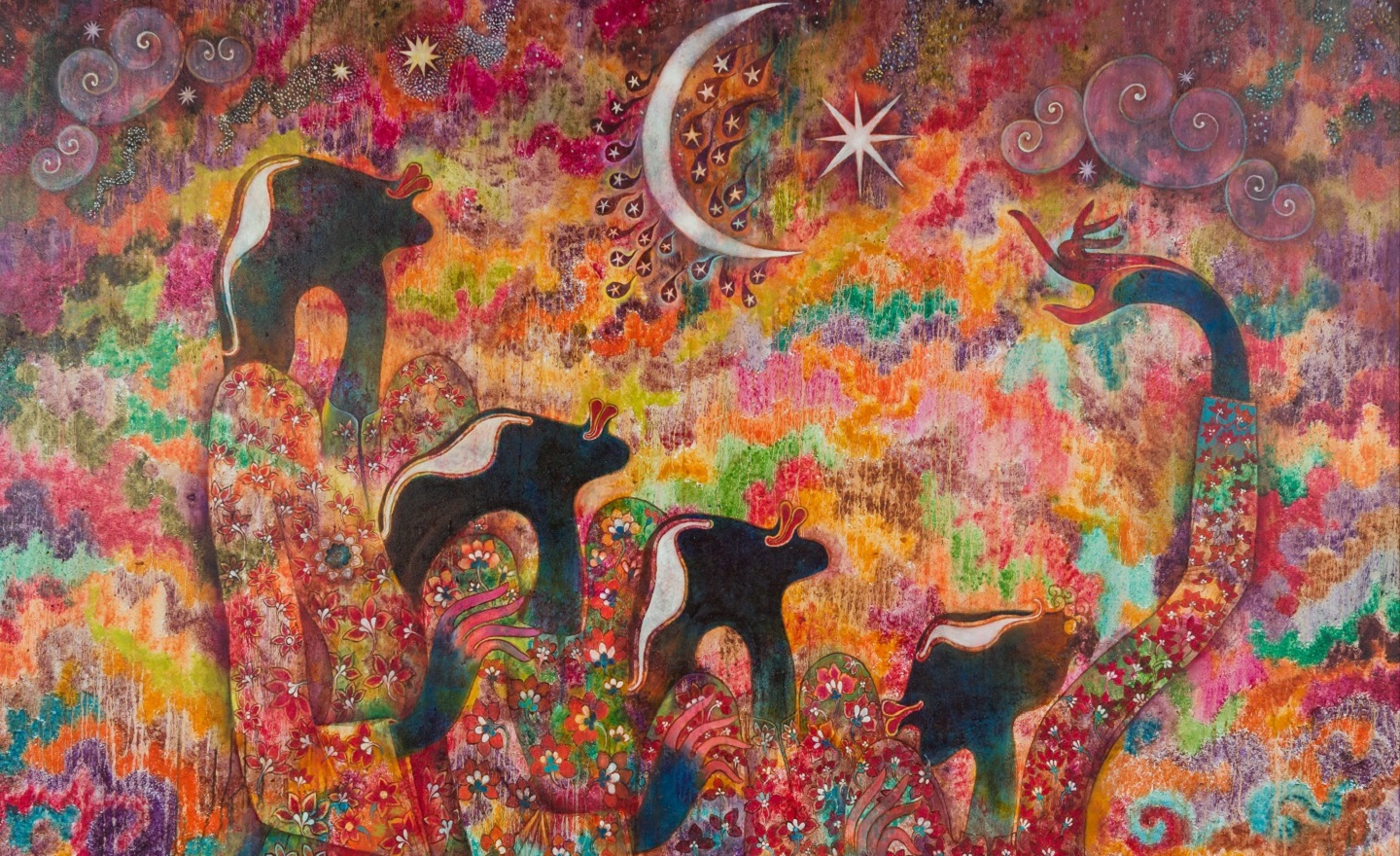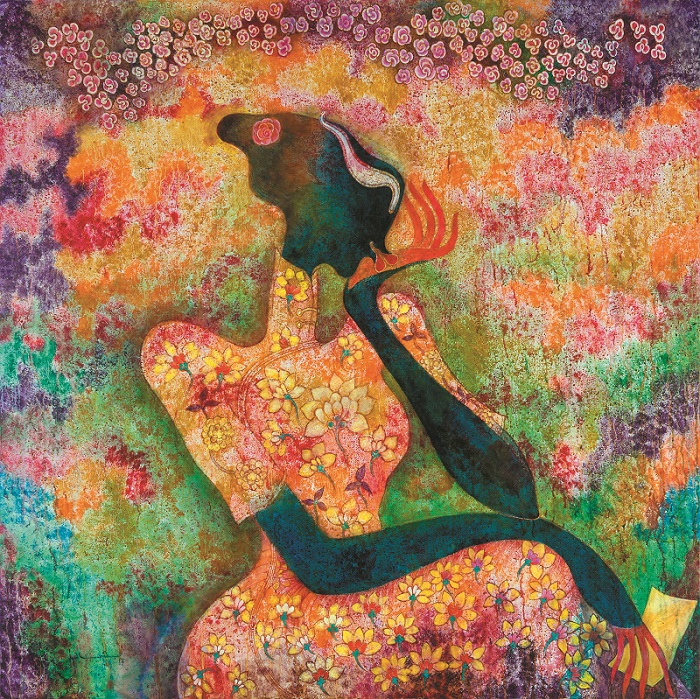
Veteran painter Syed Thajudeen Shaik Abu Talib recalls the time he arrived in Penang: “It was a very joyful day for me”. While his family had established itself on the island in the 19th century when his grandfather and granduncle arrived from India, Syed Thajudeen was born in a fishing village in south India in 1943. His parents, fearing the imminent invasion of Malaya during World War II, had temporarily relocated there.
He remembers returning with the family at age 10. “We spent seven days at sea, and on March 4, 1954, I landed in Penang. Everything was new, everything I saw was dreamlike … the ladies were dressed colourfully, I saw different faces, the Chinese, Indian, Malays and everyone talked in different languages.”
Perhaps that was what sparked a life-long fascination and love for colour. But the significance of his colourful artworks, done in a unique dabbing technique, goes beyond just artistry. If fine art is sometimes criticised as too highbrow for the common folk, Syed Thajudeen’s creations come from a place of simplicity, an unabashed expression of love, be it for family, lover, country or God.
That’s exactly the essence of his latest solo exhibition in Kuala Lumpur, Splendours of Love — a three-part showcase that includes some of his masterpiece murals, a selection of figurative works and a new series of paintings that explores faith and spirituality.
Syed Thajudeen is a storyteller. He tells us about his artworks and their inspiration with an enthusiasm and flair for romance that is reflected in the visuals. And he is unapologetic about it. “That’s what we are lacking in real life. Everything is so robotic these days,” he states.

“Whether it is mother or grandmother stories, these are the treasures for children. They are all slowly disappearing,” he adds, referring to the polyptych, The Eternal Love Between Puteri Gunung Ledang and Hang Tuah (2012).
Be it in the feminine figures he elegantly paints, the visual odes to his beloved Penang, the series of works based on historical tales of the Malacca Sultanate or even the patriotic Merdeka series, he retains a sense of guilelessness.
In another key work, a large mural simply titled Merdeka (2007), the artist reminisces about the journey of Malaysia from independence. It is romantic in execution, with the Twin Towers, Putrajaya, rubber trees and Tunku Abdul Rahman in the foreground in his iconic Merdeka pose. Little motifs of a bird and cloud morphed together evoke a sense of blessing, peace and prosperity.
The work celebrates our nation’s progress since independence, though in today’s sociopolitical climate, it may understandably be regarded with jaded cynicism. But Syed Thajudeen is adamant that even now, he would paint the same work.
“Politics is a five-year term. Our relationship [with one another, with the country] is far longer,” he takes pains to point out. “Things happen, but it will fade away. I’m a very positive person, so whatever I do, I try to put everything together and make it something happy.”
As an artist, this ethos is remarkable, even if somewhat unpopular, particularly among intellectuals. It is a resolve that has been tried and tested, from within the arts community and outside of it, and there is something to be said and learnt from such steadfastness amidst a fast-changing Malaysian landscape.
In that context, Syed Thajudeen’s art presents an opportunity to revisit the rich cultural and historical legacy of this country, evocatively expressed in the myriad of colours befitting his visual odes and stories of Malaysiana.

A closer look reveals the mastery of his unique style, where light and depth are created from a technique that eschews the rules of using colour, “No warm colour or cool colour... I put every colour together,” he smiles. Take a step back and one will see the textures that add dimension to the blended figurative silhouettes.
Coupled with a style that reflects his art training, and some Balinese influence, the paintings pay tribute to the multi-cultural heritage of his upbringing and roots, one which he wears on his sleeve. Syed Thajudeen studied art in India, and it was during a class trip to the Ajanta Caves of Maharashtra that he first got the inspiration for his enduring aesthetic.
But as we walk up to the third floor, where his newer works are exhibited, the artist reveals a more personal and introspective side. An uncharacteristically solemn calligraphic work, Alif II (2016), greets us. An image of the Arabic alphabet’s first letter, it leads us to the central piece of the series, a large mural entitled Alif I (2016). Drawing a parallel from the beginning of language to the beginning of the universe, it sets the tone for the overarching theme of spirituality and creation.
Noticeably, the use of colours has been toned down in some of the works in this series, and where his past murals placed the colours at the forefront, in this series, they convey a different significance, as though with more careful thought and heavier in meaning.
A particularly thoughtworthy piece is Ka’aba II (2016), which depicts the sacred monument in Mecca. In Syed Thajudeen’s painting, the black cube is interspersed with colour. “People always say I never draw abstract, so here it is,” he smiles wryly, before explaining, “If you put all kinds of colours together and rotate them quickly, you will still see black. In another way of looking at it, you can say there is the presence of colour, but your eyes can’t see it.”
'Splendours of Love' is on at Wisma Kebudayaan Soka Gakkai, 243 Jalan Bukit Bintang, KL, until April 8. This article first appeared on Mar 19, 2018 in The Edge Malaysia.


